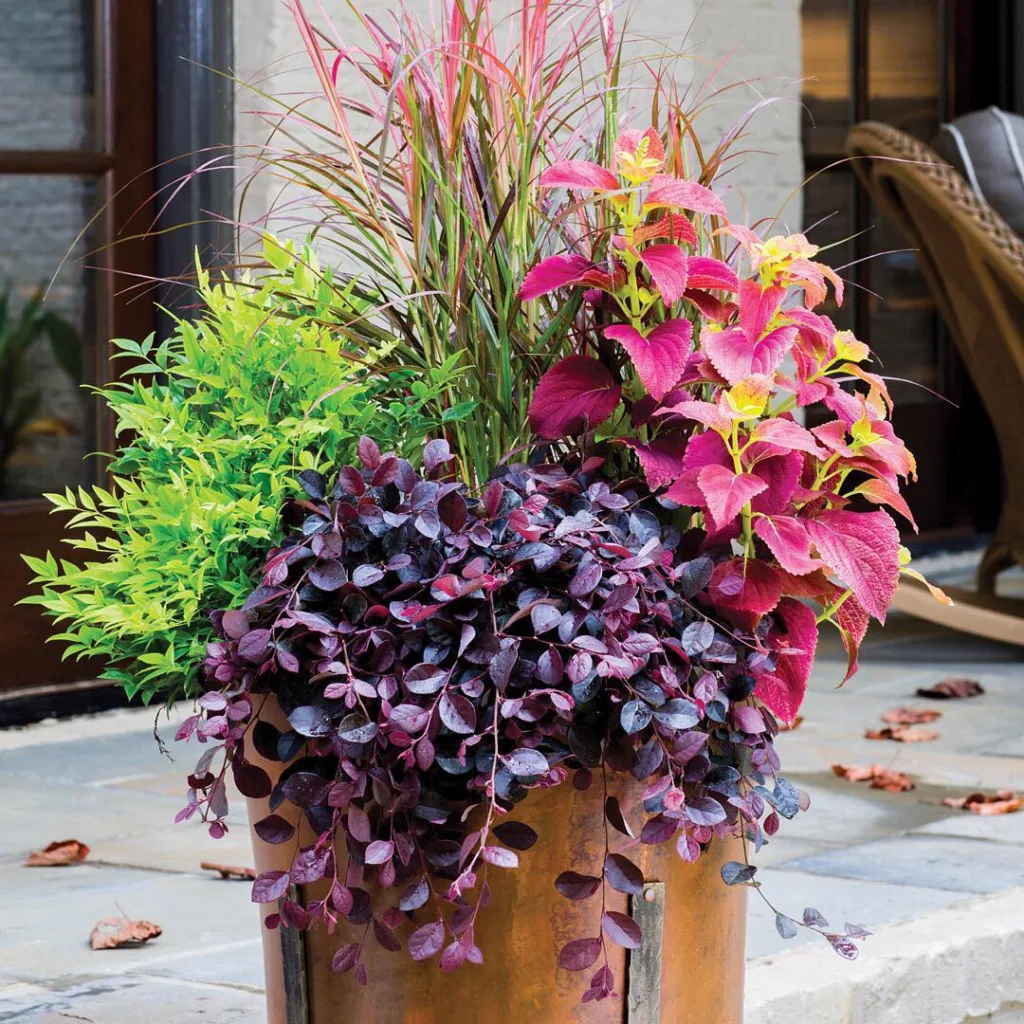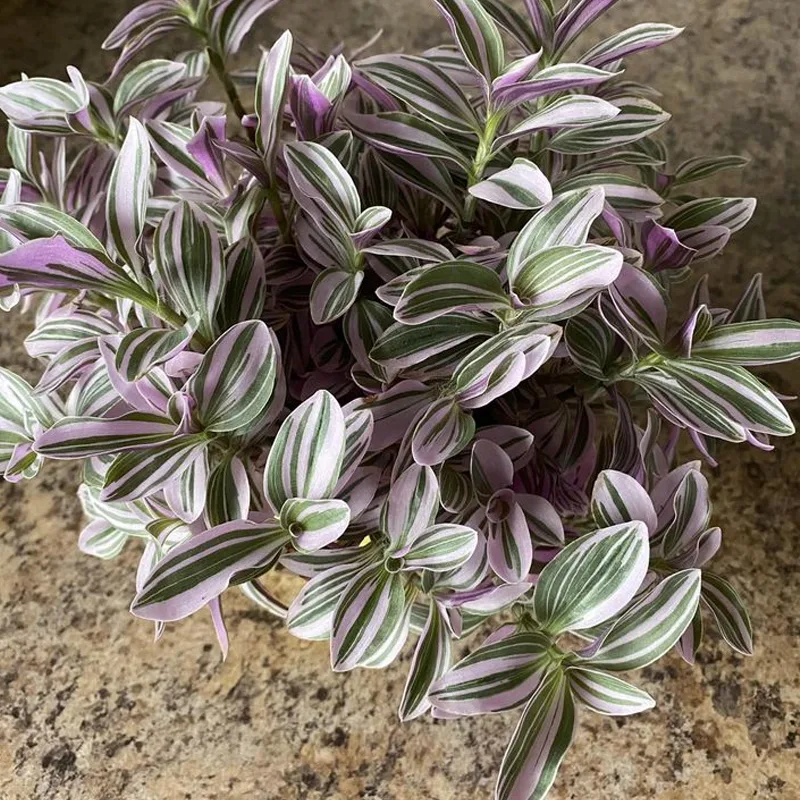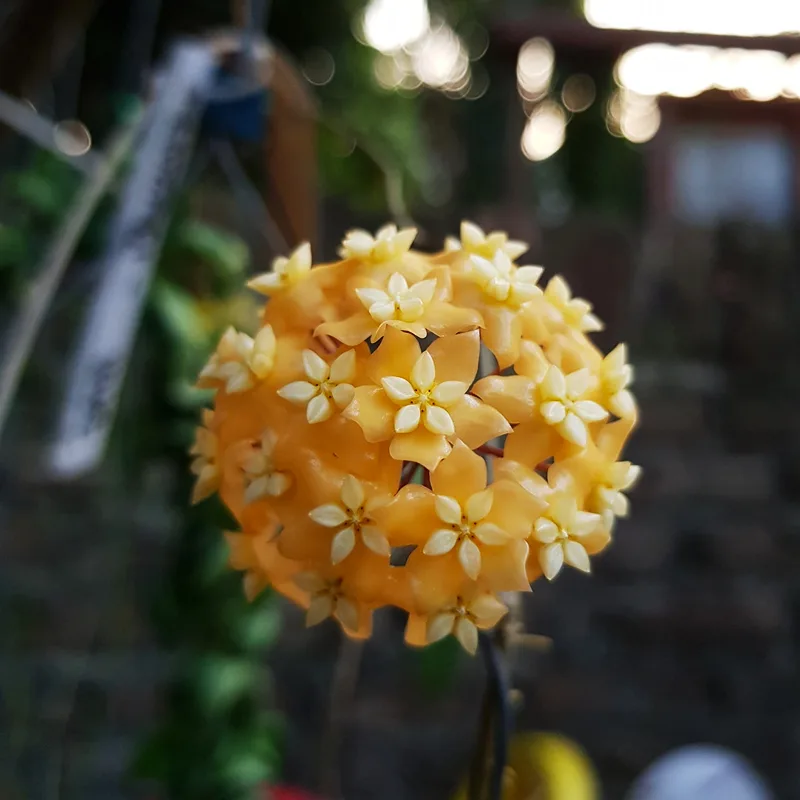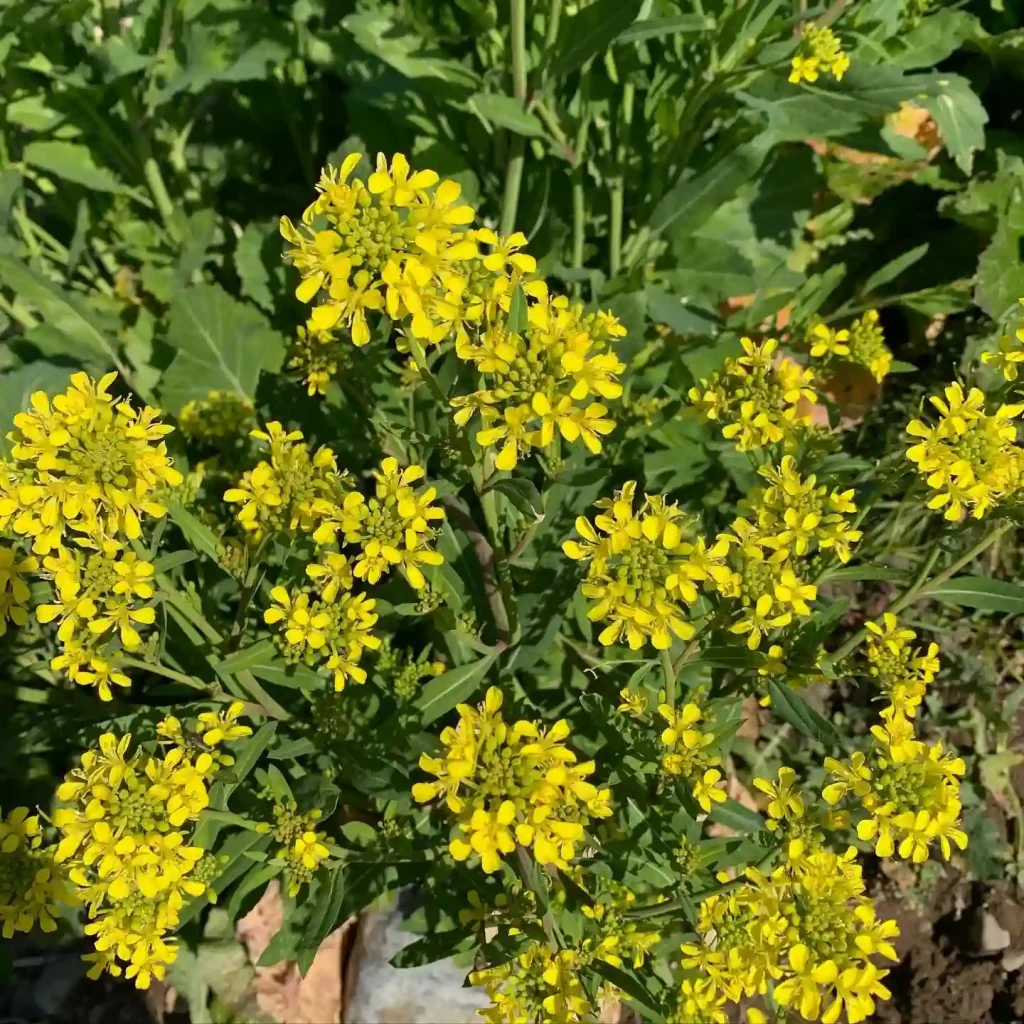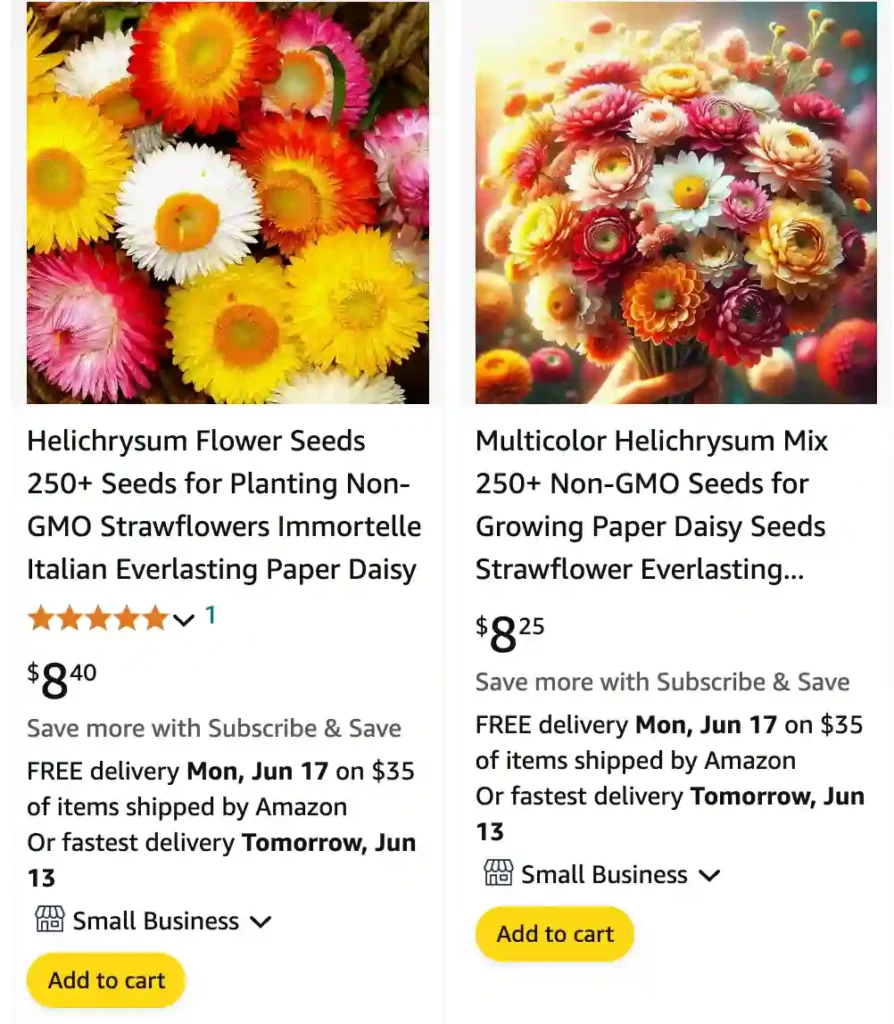
Helichrysum: The Golden Flower’s Many Wonders
For years, I’ve been fascinated by the natural world and the hidden potential of plants. Recently, Helichrysum, also known as the “Immortelle” or “Everlasting Flower,” has captured my curiosity. This sun-loving plant, with its papery petals in vibrant hues, boasts not only beauty but also a treasure trove of potential benefits. Let’s delve into the world of Helichrysum and explore its many wonders.
What is Helichrysum?
Helichrysum is a genus of flowering plants within the Asteraceae family. These sun-worshippers hail from various regions like the Mediterranean, Africa, and Australia. Known for their papery, star-shaped flowers that retain their color even after drying, Helichrysum varieties come in a spectrum of colors, from golden yellow and white to deep red and purple.
Helichrysum species
- Helichrysum abbayesii Humbert
- Helichrysum abietifolium Humbert
- Helichrysum abietinum O.Hoffm.
- Helichrysum acervatum S.Moore
- Helichrysum achryroclinoides Baker
- Helichrysum acrophilum Bolus
- Helichrysum acutatum DC.
- Helichrysum adenocarpum DC.
- Helichrysum albanense Hilliard
- Helichrysum albertense Hilliard
- Helichrysum albiflorum Moeser
- Helichrysum albilanatum Hilliard
- Helichrysum albirosulatum Killick
- Helichrysum albobrunneum S.Moore
- Helichrysum album N.E.Br.
- Helichrysum allioides Less.
- Helichrysum alsinoides DC.
- Helichrysum alticola Bolus
- Helichrysum altigenum Schltr. & Moeser
- Helichrysum alucense García-Cas., S.Scholz & E.Hernandez
- Helichrysum × ambiguum (Pers.) C.Presl
- Helichrysum amblyphyllum Mattf.
- Helichrysum amboense Schinz
- Helichrysum ambondrombeense Humbert
- Helichrysum ambositrense Humbert
- Helichrysum ammitophilum Hilliard
- Helichrysum amorginum Boiss. & Orph.
- Helichrysum amplectens Hilliard
- Helichrysum andohahelense Humbert
- Helichrysum angavense Humbert
- Helichrysum angustifrondeum S.Moore
- Helichrysum anomalum Less.
- Helichrysum antandroi Scott Elliot
- Helichrysum aphelexioides DC.
- Helichrysum appendiculatum Less.
- Helichrysum araxinum Takht. ex Kirp.
- Helichrysum arbuscula Chiov.
- Helichrysum archeri Compton
- Helichrysum archimedeum C.Brullo & Brullo
- Helichrysum arenarium (L.) Moench
- Helichrysum arenicola M.D.Hend.
- Helichrysum argentissimum J.M.Wood
- Helichrysum argyranthum O.Hoffm.
- Helichrysum argyrochlamys Humbert
- Helichrysum argyrolepis MacOwan
- Helichrysum argyrophyllum DC.
- Helichrysum argyrosphaerum DC.
- Helichrysum armenium DC.
- Helichrysum arnicoides Cordem.
- Helichrysum artemisioides Boiss. & Hausskn.
- Helichrysum artvinense P.H.Davis & Kupicha
- Helichrysum arussense Chiov.
- Helichrysum arwae J.R.I.Wood
- Helichrysum asperum (Thunb.) Hilliard & B.L.Burtt
- Helichrysum athanaton Georgiadou & Rech.f.
- Helichrysum athrixiifolium (Kuntze) Moeser
- Helichrysum attenuatum Humbert
- Helichrysum aucheri Boiss.
- Helichrysum aurantiacum Boiss. & A.Huet
- Helichrysum aureofolium Hilliard
- Helichrysum aureolum Hilliard
- Helichrysum aureum (Houtt.) Merr.
- Helichrysum auriceps Hilliard
- Helichrysum auronitens Sch.Bip.
- Helichrysum bachmannii Klatt
- Helichrysum bakeri Humbert
- Helichrysum bampsianum Lisowski
- Helichrysum baronii Humbert
- Helichrysum barorum Humbert
- Helichrysum basalticum Hilliard
- Helichrysum bellidiastrum Moeser
- Helichrysum bellum Hilliard
- Helichrysum benguellense Hiern
- Helichrysum benoistii Humbert
- Helichrysum benthamii R.Vig. & Humbert
- Helichrysum betsiliense Klatt
- Helichrysum biafranum Hook.f.
- Helichrysum boiteaui Humbert
- Helichrysum bracteiferum Humbert
- Helichrysum brassii Brenan
- Helichrysum brevifolium Humbert
- Helichrysum brownei S.Moore
- Helichrysum brunioides Moeser
- Helichrysum buchananii Engl.
- Helichrysum buddlejoides DC.
- Helichrysum bujerianum DC.
- Helichrysum buschii Juz.
- Helichrysum caespititium (DC.) Sond.
- Helichrysum callicomum Harv.
- Helichrysum calocephalum Klatt
- Helichrysum calocladum Humbert
- Helichrysum calvertianum (F.Muell.) F.Muell.
- Helichrysum cameroonense Hutch. & Dalziel
- Helichrysum campanulatum Humbert
- Helichrysum camusianum Humbert
- Helichrysum candolleanum H.Buek
- Helichrysum capense Hilliard
- Helichrysum cataractarum Beentje
- Helichrysum catipes Harv.
- Helichrysum cephaloideum DC.
- Helichrysum cerastoides DC.
- Helichrysum cespitosum DC.
- Helichrysum chamaeyucca Humbert
- Helichrysum chasei Wild
- Helichrysum chasmolycium P.H.Davis
- Helichrysum chermezonii Humbert
- Helichrysum chionoides Philipson
- Helichrysum chionophilum Boiss. & Balansa
- Helichrysum chionosphaerum DC.
- Helichrysum chrysargyrum Moeser
- Helichrysum chrysophorum S.Moore
- Helichrysum citricephalum Hilliard & B.L.Burtt
- Helichrysum citrispinum Delile
- Helichrysum cochinchinense Spreng.
- Helichrysum cochleariforme DC.
- Helichrysum compactum Boiss.
- Helichrysum concursum S.Moore
- Helichrysum confertifolium Klatt
- Helichrysum confertum N.E.Br.
- Helichrysum congolanum Schltr. & O.Hoffm.
- Helichrysum cooperi Harv.
- Helichrysum cordifolium DC.
- Helichrysum coriaceum Sond.
- Helichrysum coursii Humbert
- Helichrysum crassifolium (L.) D.Don ex G.Don
- Helichrysum cremnophilum Humbert
- Helichrysum crispum D.Don ex G.Don
- Helichrysum cryptomerioides Baker
- Helichrysum cuspidatum Mesfin & T.Reilly
- Helichrysum cutchicum (C.B.Clarke) R.S.Rao & Deshp.
- Helichrysum cylindriflorum (L.) Hilliard & B.L.Burtt
- Helichrysum cymosum (L.) D.Don ex G.Don
- Helichrysum danguyanum Humbert
- Helichrysum dasyanthum Sweet
- Helichrysum dasycephalum O.Hoffm.
- Helichrysum dasymallum Hilliard
- Helichrysum decaryi Humbert
- Helichrysum decorum DC.
- Helichrysum decrescentisquamatum Humbert
- Helichrysum deltoideum Humbert
- Helichrysum denae Ponert
- Helichrysum depressum (Hook.f.) Benth. & Hook.f.
- Helichrysum deserticola Hilliard
- Helichrysum devium J.Y.Johnson
- Helichrysum devredii Lisowski
- Helichrysum dichotomum Humbert
- Helichrysum dichroolepis Brenan
- Helichrysum dichroum Humbert
- Helichrysum difficile Hilliard
- Helichrysum diffusum DC.
- Helichrysum dimorphotrichum Humbert
- Helichrysum diotoides DC.
- Helichrysum doerfleri Rech.f.
- Helichrysum dracaenifolium Humbert
- Helichrysum drakensbergense Killick
- Helichrysum dregeanum Sond. & Harv.
- Helichrysum dubardii R.Vig. & Humbert
- Helichrysum dunense Hilliard
- Helichrysum duvigneaudii Lisowski
- Helichrysum ecklonis Sond.
- Helichrysum edwardsii Wild
- Helichrysum elegantissimum DC.
- Helichrysum elephantinum Cufod.
- Helichrysum ellipticifolium Moeser
- Helichrysum ephelos Hilliard
- Helichrysum erigavoanum Mesfin & T.Reilly
- Helichrysum errerae Tineo
- Helichrysum erubescens Hilliard
- Helichrysum evansii Hilliard
- Helichrysum excisum Less.
- Helichrysum faradifani Scott Elliot
- Helichrysum felinum Less.
- Helichrysum ferganicum Lazkov & Sultanova
- Helichrysum filaginoides Humbert
- Helichrysum filicaule Hook.f.
- Helichrysum flagellare Baker
- Helichrysum flammeiceps Brenan
- Helichrysum flanaganii Bolus
- Helichrysum foetidum (L.) Moench
- Helichrysum foliosum Humbert
- Helichrysum × fontqueri J.M.Aparicio, D.Mesa, J.Moro & F.Royo
- Helichrysum formosissimum Sch.Bip.
- Helichrysum forskahlii (J.F.Gmel.) Hilliard & B.L.Burtt
- Helichrysum forsythii Humbert
- Helichrysum fourcadei Hilliard
- Helichrysum foveolatum Ponert
- Helichrysum fruticans D.Don
- Helichrysum fulgens Humbert & Staner
- Helichrysum fulvescens DC.
- Helichrysum fulvum N.E.Br.
- Helichrysum funereum Chiov.
- Helichrysum gaharoense Moeser & Schltr.
- Helichrysum galpinii N.E.Br.
- Helichrysum gariepinum DC.
- Helichrysum geayi Humbert & Humbert
- Helichrysum geminatum Klatt
- Helichrysum geniorum Humbert
- Helichrysum glaciale Hilliard
- Helichrysum glanduliferum Sch.Bip.
- Helichrysum glandulosum Ledeb.
- Helichrysum globiferum Boiss.
- Helichrysum globosum Sch.Bip.
- Helichrysum glomeratum Klatt
- Helichrysum gloria-dei Chiov.
- Helichrysum glossophyllum Humbert
- Helichrysum glumaceum DC.
- Helichrysum goetzeanum O.Hoffm.
- Helichrysum gofense Cufod.
- Helichrysum gossypinum Sch.Bip.
- Helichrysum goulandriorum Georgiadou
- Helichrysum gradatum Humbert
- Helichrysum grandibracteatum M.D.Hend.
- Helichrysum grandiflorum D.Don
- Helichrysum graniticola Wild
- Helichrysum graveolens (M.Bieb.) Sweet
- Helichrysum griseolanatum Hilliard
- Helichrysum griseum Sond.
- Helichrysum gymnocephalum Humbert
- Helichrysum gymnocomum DC.
- Helichrysum hamulosum DC.
- Helichrysum harennense Mesfin
- Helichrysum harveyanum Wild
- Helichrysum haygarthii Bolus
- Helichrysum hebelepis DC.
- Helichrysum hedbergianum Mesfin & T.Reilly
- Helichrysum heldreichii Boiss.
- Helichrysum helianthemifolium D.Don ex G.Don
- Helichrysum heliotropifolium DC.
- Helichrysum helvolum Moeser
- Helichrysum herbaceum (Andrews) Sweet
- Helichrysum herniarioides DC.
- Helichrysum heterolasium Hilliard
- Helichrysum heterotrichum Humbert
- Helichrysum heywoodianum P.H.Davis
- Helichrysum hilliardiae Wild
- Helichrysum hirtum Humbert
- Helichrysum homilochrysum S.Moore
- Helichrysum hookerianum Wight & Arn. ex DC.
- Helichrysum horridum (Sch.Bip.) A.Rich.
- Helichrysum humbertii Sillans
- Helichrysum humblotii Klatt
- Helichrysum hyblaeum Brullo
- Helichrysum hyphocephalum Hilliard
- Helichrysum hypoleucum Harv.
- Helichrysum ibityense R.Vig. & Humbert
- Helichrysum incarnatum DC.
- Helichrysum indicum (L.) Grierson
- Helichrysum indutum Humbert
- Helichrysum ingomense Hilliard
- Helichrysum inornatum Hilliard & B.L.Burtt
- Helichrysum interjacens Hilliard
- Helichrysum interzonale Compton
- Helichrysum intricatum DC.
- Helichrysum inyangense Wild
- Helichrysum isalense Humbert
- Helichrysum isolepis Bolus
- Helichrysum italicum (Roth) G.Don Plant FAQs: Italian Strawflower – Helichrysum Italicum
- Helichrysum itremense Humbert
- Helichrysum jubilatum Hilliard
- Helichrysum junodii Moeser
- Helichrysum kalandanum Lisowski
- Helichrysum × kani-isikii Semiz, Şenol & Günal
- Helichrysum kashgaricum C.H.An
- Helichrysum keilii Moeser
- Helichrysum kermanicum Mozaff. & Rajaei
- Helichrysum kilimanjari Oliv.
- Helichrysum kirkii Oliv. & Hiern
- Helichrysum kitianum Yıldız
- Helichrysum korongoni Beentje
- Helichrysum kraussii Sch.Bip.
- Helichrysum krebsianum Less.
- Helichrysum krookii Moeser
- Helichrysum lacteum Coss. & Durieu
- Helichrysum lambertianum DC.
- Helichrysum lancifolium Willd.
- Helichrysum lanuginosum Humbert & Humbert
- Helichrysum lastii Engl.
- Helichrysum lavanduloides DC.
- Helichrysum lawalreeanum Lisowski
- Helichrysum lecomtei R.Vig. & Humbert
- Helichrysum leimanthium Klatt
- Helichrysum lejolyanum Lisowski
- Helichrysum leontonyx DC.
- Helichrysum lepidissimum S.Moore
- Helichrysum leptocephalum (DC.) Humbert
- Helichrysum leptorhizum DC.
- Helichrysum lesliei Hilliard
- Helichrysum leucocephalum Boiss.
- Helichrysum leucocladum Humbert
- Helichrysum leucopsideum DC.
- Helichrysum leucosphaerum Baker
- Helichrysum lineare DC.
- Helichrysum lineatum Bolus
- Helichrysum lingulatum Hilliard
- Helichrysum litorale Bolus
- Helichrysum litoreum Guss.
- Helichrysum longifolium DC.
- Helichrysum longinquum Hilliard
- Helichrysum longiramum Moeser
- Helichrysum lucilioides Less.
- Helichrysum luzulifolium DC.
- Helichrysum madagascariense DC.
- Helichrysum maestum Wild
- Helichrysum mahafaly Humbert
- Helichrysum malaisseanum Lisowski
- Helichrysum mandrarense Humbert
- Helichrysum mangorense Humbert
- Helichrysum mannii Hook.f.
- Helichrysum manopappoides Humbert
- Helichrysum maracandicum Popov ex Kirp.
- Helichrysum maranguense O.Hoffm.
- Helichrysum marginatum DC.
- Helichrysum mariepscopicum Hilliard
- Helichrysum marifolium DC.
- Helichrysum marlothianum O.Hoffm.
- Helichrysum marmarolepis S.Moore
- Helichrysum marojejyense Humbert
- Helichrysum massanellanum Herrando, J.M.Blanco, L.Sáez & Galbany
- Helichrysum mauritianum A.J.Scott
- Helichrysum mechowianum Klatt
- Helichrysum melaleucum Rchb. ex Holl
- Helichrysum melanacme DC.
- Helichrysum membranaceum Wild
- Helichrysum meyeri-johannis Engl.
- Helichrysum miconiifolium DC.
- Helichrysum microcephalum DC.
- Helichrysum micropoides DC.
- Helichrysum mildbraedii Moeser
- Helichrysum milfordiae Killick
- Helichrysum milleri Hilliard
- Helichrysum milne-redheadii Brenan
- Helichrysum mimetes S.Moore
- Helichrysum minutiflorum Humbert
- Helichrysum mirabile Humbert
- Helichrysum mixtum O.Hoffm.
- Helichrysum moeserianum Thell.
- Helichrysum moggii Wild
- Helichrysum molestum Hilliard
- Helichrysum mollifolium Hilliard
- Helichrysum monizii Lowe
- Helichrysum monodianum Quézel
- Helichrysum monogynum B.L.Burtt & Sunding
- Helichrysum montanum DC.
- Helichrysum monticola Hilliard
- Helichrysum montis-cati Hilliard
- Helichrysum mossamedense (Hiern) Mendonça
- Helichrysum mundii Harv.
- Helichrysum mussae Nevski
- Helichrysum mutabile Hilliard
- Helichrysum mutisiifolium Less.
- Helichrysum myriocephalum Humbert
- Helichrysum nanum Klatt
- Helichrysum natalitium DC.
- Helichrysum nebrodense Heldr.
- Helichrysum neoachyroclinoides Humbert
- Helichrysum neocaledonicum Schltr.
- Helichrysum neoisalense Humbert
- Helichrysum nervicinctum Humbert
- Helichrysum newii Oliv. & Hiern
- Helichrysum nicolai N.Kilian, Galbany & Oberpr.
- Helichrysum nimbicola Hilliard
- Helichrysum nitens Oliv. & Hiern
- Helichrysum niveum Less.
- Helichrysum noeanum Boiss.
- Helichrysum nogaicum Tzvelev
- Helichrysum nudifolium (L.) Less.
- Helichrysum nuratavicum Krasch.
- Helichrysum obconicum DC.
- Helichrysum obductum Bolus
- Helichrysum obtusum Moeser
- Helichrysum ochraceum Klatt
- Helichrysum odoratissimum (L.) Sweet
- Helichrysum ogadense Mesfin
- Helichrysum oligocephalum DC.
- Helichrysum oligochaetum F.Muell.
- Helichrysum oligopappum Bolus
- Helichrysum onivense Humbert
- Helichrysum oocephalum Boiss.
- Helichrysum opacum Klatt
- Helichrysum orbicularifolium Sümbül, Göktürk & O.D.Düșen
- Helichrysum oreophilum Klatt
- Helichrysum orientale (L.) Gaertn.
- Helichrysum orothamnus Humbert
- Helichrysum outeniquense Hilliard
- Helichrysum oxybelium DC.
- Helichrysum pagophilum M.D.Hend.
- Helichrysum paleatum Hilliard
- Helichrysum pallasii (Spreng.) Ledeb.
- Helichrysum pallens S.Moore
- Helichrysum pallidum DC.
- Helichrysum palustre Hilliard
- Helichrysum pamphylicum P.H.Davis & Kupicha
- Helichrysum panduratum O.Hoffm. ex De Wild. & T.Durand
- Helichrysum pandurifolium Schrank
- Helichrysum pannosum DC.
- Helichrysum panormitanum Tineo ex Guss.
- Helichrysum paronychioides DC.
- Helichrysum pascuosum S.Moore
- Helichrysum patulifolium Baker
- Helichrysum patulum D.Don
- Helichrysum paulayanum Vierh.
- Helichrysum pawekiae Wild
- Helichrysum pedunculatum Hilliard & B.L.Burtt
- Helichrysum pendulum (C.Presl) C.Presl
- Helichrysum pentzioides Less.
- Helichrysum perlanigerum Gamble
- Helichrysum perrieri Humbert
- Helichrysum persicum F.Ghahrem. & Noori
- Helichrysum peshmenianum S.Erik
- Helichrysum petiolare Hilliard & B.L.Burtt Plant FAQs: Helichrysum Petiolare
- Helichrysum petraeum Hilliard
- Helichrysum phylicifolium DC.
- Helichrysum plantago DC.
- Helichrysum platycephalum Baker
- Helichrysum platypterum DC.
- Helichrysum plebeium DC.
- Helichrysum plicatum DC.
- Helichrysum plinthocalyx Sosn.
- Helichrysum pluriceps K.Koch
- Helichrysum polhillianum Lisowski
- Helichrysum polioides B.L.Burtt
- Helichrysum polycladum Klatt
- Helichrysum pomelianum Greuter
- Helichrysum populifolium DC.
- Helichrysum praecinctum Klatt
- Helichrysum praecurrens Hilliard
- Helichrysum proteoides (Lam.) Baker
- Helichrysum pseudoanaxeton Humbert
- Helichrysum psiadiifolium Mesfin & T.Reilly
- Helichrysum psilolepis Harv.
- Helichrysum psychrophilum Boiss.
- Helichrysum pulchellum DC.
- Helichrysum pumilio (O.Hoffm.) Hilliard & B.L.Burtt
- Helichrysum pumilum Hook.f.
- Helichrysum pygmaeum Post
- Helichrysum qathlambanum Hilliard
- Helichrysum quartinianum A.Rich.
- Helichrysum raynalianum Quézel
- Helichrysum reflexum N.E.Br.
- Helichrysum refractum Hilliard
- Helichrysum retortoides N.E.Br.
- Helichrysum retortum (L.) Willd.
- Helichrysum retrorsum DC.
- Helichrysum revolutum (Thunb.) Less.
- Helichrysum rhodellum Wild
- Helichrysum × rhodium Rech.f.
- Helichrysum riparium Brenan
- Helichrysum robbrechtianum Lisowski
- Helichrysum roseoniveum Marloth & O.Hoffm.
- Helichrysum rosum Less.
- Helichrysum rotundatum Harv.
- Helichrysum rotundifolium Less.
- Helichrysum ruandense Lisowski
- Helichrysum ruderale Hilliard & B.L.Burtt
- Helichrysum rudolfii Hilliard
- Helichrysum rugulosum Less.
- Helichrysum rutilans (L.) D.Don ex G.Don
- Helichrysum saboureaui Humbert
- Helichrysum salviifolium Humbert
- Helichrysum sambiranense Humbert
- Helichrysum sanguineum (L.) Kostel.
- Helichrysum sarcolaenifolium Humbert
- Helichrysum saxatile Moris
- Helichrysum saxicola Hilliard
- Helichrysum scabrum Less.
- Helichrysum schimperi (Sch.Bip. ex A.Rich.) Moeser
- Helichrysum scitulum Hilliard & B.L.Burtt
- Helichrysum sclerochlaenum Sch.Bip. ex Moeser
- Helichrysum semifertile F.Muell.
- Helichrysum serotinum (DC.) Boiss.
- Helichrysum serpentinicola Wild
- Helichrysum sessile DC.
- Helichrysum sessilioides Hilliard
- Helichrysum setosum Harv.
- Helichrysum sibthorpii Rouy
- Helichrysum silvaticum Hilliard
- Helichrysum simillimum DC.
- Helichrysum simpsonii Kottaim.
- Helichrysum simulans Harv. & Sond.
- Helichrysum sivasicum Kit Tan & Yıldız
- Helichrysum solitarium Hilliard
- Helichrysum somalense Baker f.
- Helichrysum sordidum Humbert
- Helichrysum spencerianum Wild
- Helichrysum sphaeroideum Moeser
- Helichrysum spiciforme DC.
- Helichrysum spiralepis Hilliard & B.L.Burtt
- Helichrysum splendidum Less.
- Helichrysum spodiophyllum Hilliard & B.L.Burtt
- Helichrysum stellatum Less.
- Helichrysum stenoclinoides Humbert
- Helichrysum stenopterum DC.
- Helichrysum stilpnocephalum Humbert
- Helichrysum stoechas (L.) Moench
- Helichrysum stoloniferum (L.f.) Willd.
- Helichrysum stolzii Mattf.
- Helichrysum stuhlmannii O.Hoffm.
- Helichrysum subfalcatum Hilliard
- Helichrysum subglobosum Humbert
- Helichrysum subglomeratum Less.
- Helichrysum subluteum Burtt Davy
- Helichrysum subsimile Rech.f.
- Helichrysum subumbellatum Humbert
- Helichrysum sulphureofuscum Baker
- Helichrysum summo-montanum I.Verd.
- Helichrysum sutherlandii Harv.
- Helichrysum swynnertonii S.Moore
- Helichrysum symoensianum Lisowski
- Helichrysum syncephaloides Humbert
- Helichrysum taenari Rothm.
- Helichrysum tanacetiflorum Baker
- Helichrysum tanaiticum P.A.Smirn.
- Helichrysum tardieuae Humbert
- Helichrysum tenax M.D.Hend.
- Helichrysum tenderiense Umanets
- Helichrysum tenue Humbert
- Helichrysum tenuiculum DC.
- Helichrysum tenuifolium Killick
- Helichrysum teretifolium (L.) Sweet
- Helichrysum teydeum (Wildpret & Greuter) Raus
- Helichrysum thapsus O.Hoffm.
- Helichrysum theresae Lisowski
- Helichrysum thianschanicum Regel
- Helichrysum tillandsiifolium O.Hoffm.
- Helichrysum tinctum (Thunb.) Hilliard & B.L.Burtt
- Helichrysum tithonioides Wild
- Helichrysum tomentosulum (Klatt) Merxm.
- Helichrysum tomentosum Humbert
- Helichrysum tongense Hilliard
- Helichrysum translucidum Humbert
- Helichrysum transmontanum Hilliard
- Helichrysum traversii Chiov.
- Helichrysum tricostatum Less.
- Helichrysum trilineatum DC.
- Helichrysum trinervatum Baker
- Helichrysum triplinerve DC.
- Helichrysum truncatum Burtt Davy
- Helichrysum turbinatum Fitzg.
- Helichrysum tysonii Hilliard
- Helichrysum umbellulatum S.Moore
- Helichrysum umbraculigerum Less.
- Helichrysum undulifolium Hutch. & B.L.Burtt
- Helichrysum unicapitatum Şenol, Seçmen & B.Öztürk
- Helichrysum uninervium Burtt Davy
- Helichrysum vaginatum Humbert
- Helichrysum valentinum Rouy
- Helichrysum vernum Hilliard
- Helichrysum versicolor O.Hoffm. & Muschl.
- Helichrysum viguieri Humbert
- Helichrysum virgineum DC.
- Helichrysum vohimavense Humbert
- Helichrysum wightii C.B.Clarke ex Hook.f.
- Helichrysum wilmsii Moeser
- Helichrysum witbergense Bolus
- Helichrysum wittei Hutch. & B.L.Burtt
- Helichrysum woodii N.E.Br.
- Helichrysum xerochrysum DC.
- Helichrysum xylocladum Baker
- Helichrysum yuccifolium (Lam.) DC.
- Helichrysum yurterianum Gemici, Kit Tan, Yıldırım & M.Gemici
- Helichrysum zeyheri Less.
- Helichrysum zivojini Černjavski & Soska
- Helichrysum zwartbergense Bolus
How to Care for Helichrysum?
Growing Helichrysum is a joy for gardeners of all levels. These low-maintenance plants thrive in well-draining soil and full sun to partial shade. Once established, they’re quite drought-tolerant, requiring regular watering only during their initial growth stages. Deadheading spent blooms encourages continued flowering throughout the season, allowing you to enjoy their beauty for longer.
How to Propagate Helichrysum?
Sharing the beauty of Helichrysum is easy. Propagation can be done through seeds or stem cuttings. For seeds, sow them indoors in early spring and transplant them outdoors after the danger of frost has passed. For stem cuttings, take a non-flowering stem, remove the lower leaves, and plant it in a pot with moist soil. Keep the soil consistently damp and provide indirect sunlight until roots develop.
What to Plant with Helichrysum?
Helichrysum’s vibrant colors and drought tolerance make it a charming addition to various garden styles. Consider pairing them with complementary plants like lavender, rosemary, sage, or ornamental grasses for a low-maintenance and visually stunning display.
What Does Helichrysum Smell Like?
The aroma of Helichrysum is unique and complex. Often described as warm, herbaceous, and slightly honeyed, it carries a hint of curry or licorice. The scent is considered calming and grounding, making it a popular choice in aromatherapy.
What is Helichrysum Oil Good For?
Helichrysum essential oil, extracted from the flower heads through steam distillation, is prized for its potential therapeutic properties. Studies suggest it may possess anti-inflammatory, antioxidant, and antimicrobial qualities. Proponents claim Helichrysum oil can be used for various purposes, including:
- Wound healing: Due to its potential anti-inflammatory and antimicrobial properties, Helichrysum oil may aid wound healing by reducing inflammation and preventing infection.
- Skin concerns: Helichrysum oil’s anti-inflammatory properties might be beneficial for calming irritated skin and reducing the appearance of blemishes.
- Muscle aches and pains: The oil’s anti-inflammatory properties may offer relief from muscle soreness and discomfort.
- Stress and anxiety: The calming aroma of Helichrysum oil is believed to promote relaxation and ease feelings of anxiety.
Important Disclaimer: It’s crucial to note that the effectiveness of Helichrysum oil for these purposes is not definitively proven by scientific research. Always consult with a healthcare professional before using essential oils, especially if you have any underlying health conditions or are pregnant or breastfeeding.
How to Use Helichrysum Essential Oil?
Helichrysum essential oil is highly concentrated and should never be applied directly to the skin. Here are some safe ways to use it:
- Diffusion: Add a few drops of Helichrysum oil to a diffuser with water to enjoy its calming aroma.
- Topical application: Dilute Helichrysum oil with a carrier oil like jojoba or almond oil before applying it topically. A 1% dilution (1 drop of Helichrysum oil to 100 ml of carrier oil) is a good starting point. Always test a small area of your skin first to check for any allergic reactions.
- Bath: Add a few drops of diluted Helichrysum oil to your bathwater for a relaxing and potentially pain-relieving soak.
Is Helichrysum Safe for Dogs and Cats?
Helichrysum essential oil can be toxic to dogs and cats. Their smaller bodies are more susceptible to the concentrated nature of essential oils. Avoid using Helichrysum oil around pets altogether.
How to Make Helichrysum Oil at Home?
While tempting, making Helichrysum essential oil at home isn’t recommended. The process requires specialized equipment and expertise to ensure proper extraction and avoid contamination. Commercially available Helichrysum essential oil undergoes rigorous testing to guarantee purity and safety.
Is Helichrysum Poisonous?
Helichrysum itself, in its plant form, is generally considered non-toxic for humans when handled appropriately. However, ingesting large quantities may cause stomach upset. It’s always best to avoid internal consumption and consult with a healthcare professional before using Helichrysum in any form if you have any concerns.
Does Helichrysum Help Spider Veins?
There’s limited scientific evidence to definitively say whether Helichrysum oil helps with spider veins. While some proponents believe its anti-inflammatory properties may be beneficial, more research is needed to confirm this. Consulting a dermatologist is the best course of action for addressing spider veins.
Is Helichrysum a Perennial?
The answer depends on the specific Helichrysum variety. Some species, like Helichrysum italicum (Curry Plant), are considered half-hardy perennials in warmer climates (zones 7-10). However, many Helichrysum varieties are treated as annuals, especially in colder regions.
Final Thoughts
Helichrysum offers a captivating combination of beauty and potential wellness benefits. Whether you’re drawn to its vibrant blooms in your garden or the intriguing properties of its essential oil, there’s a way to experience the wonder of this “Everlasting Flower.” Remember, while Helichrysum oil holds promise for various uses, consult with a healthcare professional before incorporating it into your routine, especially if you have any existing health conditions. With proper research and responsible use, Helichrysum can be a valuable addition to your exploration of the natural world’s potential.
If i die, water my plants!
